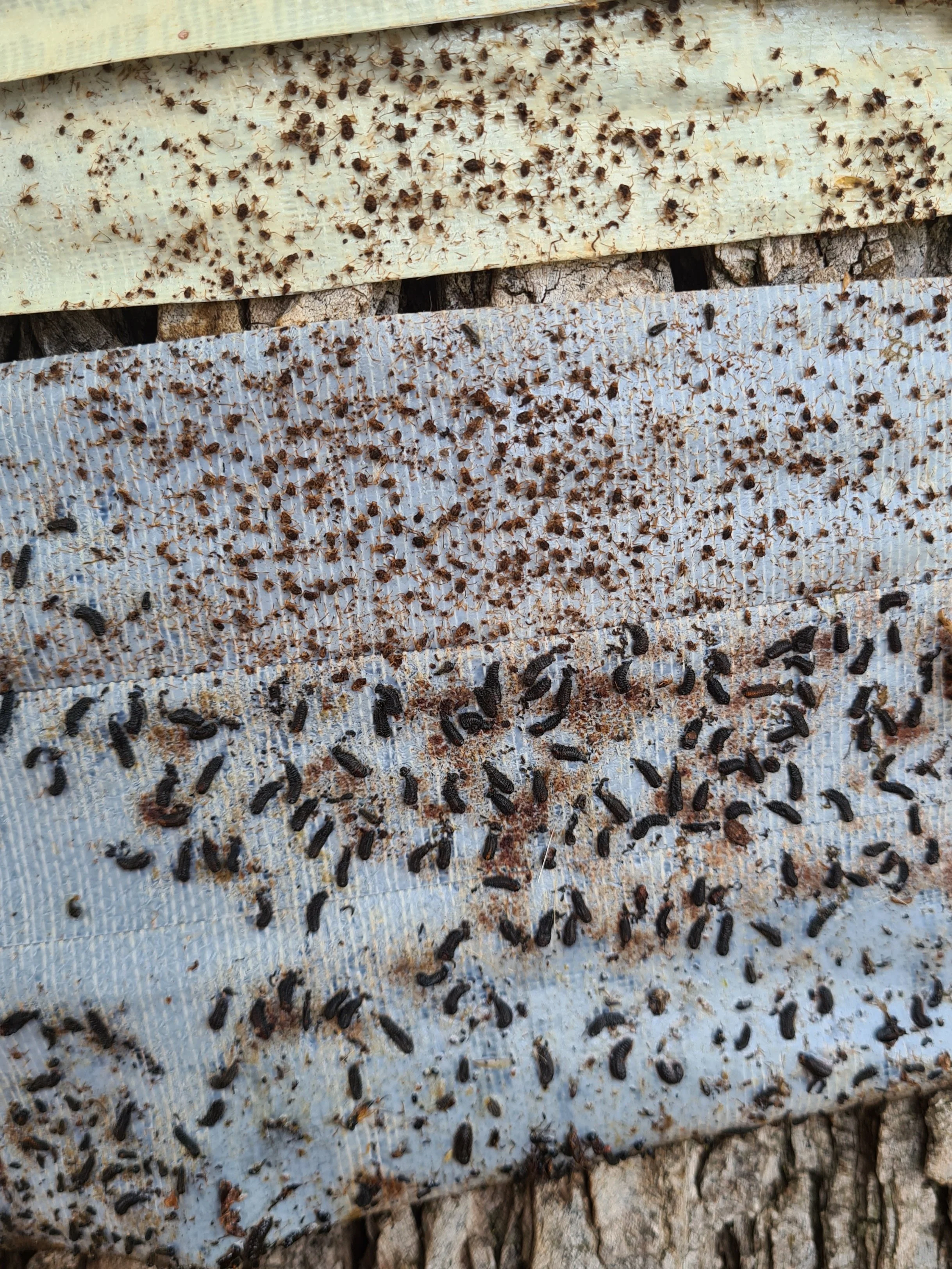Elm Leaf Beetle Infestation: Non-chemical control
-

Emerging immature beetles post-winter hibernation.
-

Adult Elm Leaf Beetle feeding on leaves creating punctures that lead to the skeletonisation of leaves.
-

Heavy infestations can cause extensive skeletonisation which decreases the trees’ capacity to photosynthesise. Although a healthy Elm tree can survive an initial attack, constant subsequent attacks in one season and over repeated years can lead to tree death.
-

Tree banding was one method employed to decrease the ELB population. In this picture, the tape has trapped larvae, immature adults, and full adults.
Non-chemical controL: Elm Leaf Beetle Infestation
The invasive, non-native Elm Leaf Beetle (ELB) (Xanthogaleruca luteola) was identified infesting more than a dozen European Elm trees on a property in the Monaro Plains, NSW. Both adult beetles and larvae skeletonise and puncture leaves, significantly reducing the tree’s ability to photosynthesise. In high-density infestations, repeated defoliation within a single season can severely weaken trees and ultimately lead to mortality.
The objective of this project was to dramatically reduce, and where possible eradicate, the ELB population using non-chemical, organic control methods, avoiding the use of insecticides.
Conventional ELB management commonly relies on neonicotinoid insecticides, which are well documented as harmful to non-target organisms including pollinators, birds, reptiles, amphibians, and aquatic species. Neonicotinoids have been linked to widespread declines in bee and bird populations and are banned or heavily restricted in many countries.
https://www.eea.europa.eu/highlights/neonicotinoid-pesticides-are-a-huge
Control Approach
An integrated, non-chemical management strategy was implemented, including:
Physical controls, using trunk banding with tape and horticultural glue to intercept larvae and adults. Bands were replaced weekly to maintain effectiveness
Habitat modification, including removal of elm suckers to reduce larval habitat and overwintering sites
Biological control enhancement, with nearby planting of lavender and other flowering species to support beneficial insects such as lacewings and lady beetles
Targeted biological releases, with lacewing larvae introduced periodically
Tree health support, through the application of beneficial mycorrhizal fungi and active vermiculture (worm) tea to improve soil health and resilience
Outcomes
The ELB population was dramatically reduced, and the affected trees are now thriving with strong canopy recovery.
Notably, the project also resulted in an unexpected and exciting discovery: a native beetle species was observed actively preying on Elm Leaf Beetle. To our knowledge, no native predators of ELB had previously been documented in Australia, making this a significant and encouraging finding for future biological control research.
C
